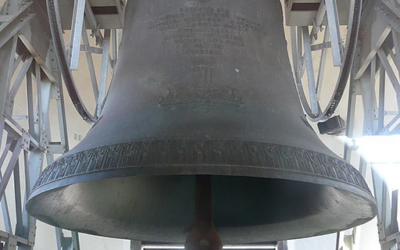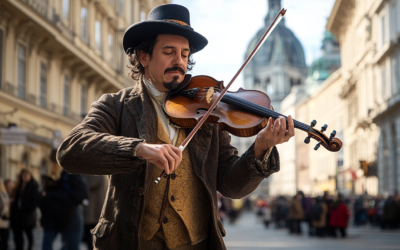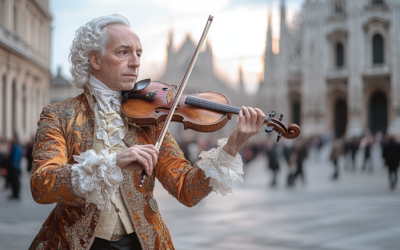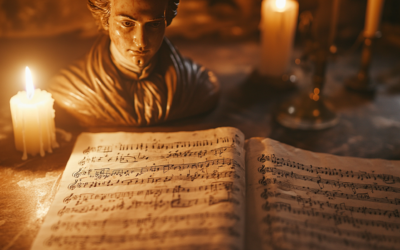Leopold’s Invisible Hand
The Truth Behind Mozart’s Early Compositions
Behind the glittering performances of young Wolfgang and Nannerl Mozart lay the meticulous guidance of their father, Leopold. Often considered a mere teacher, Leopold’s role in composing and shaping their early musical successes has been largely overlooked. Was the child prodigy truly a genius, or was it Leopold who orchestrated his son’s rise to fame?
Mozart: The Fall of the Gods
This book offers a fresh and critical look at the life of Wolfgang Amadeus Mozart, challenging the myths that have surrounded him for centuries. We strip away the romanticised image of the “natural genius” and delve into the contradictions within Mozart’s extensive biographies. Backed by nearly 2,000 meticulously sourced citations, this work invites readers to explore a deeper, more complex understanding of Mozart. Perfect for those who wish to question the traditional narrative, this biography is a must-read for serious music lovers and historians.
"Leopold Mozart was the real composer behind many of Wolfgang and Nannerl’s early works, shaping their success while crafting his own legacy."
Mozart: The Fall of the Gods
Mozart and Nannerl: Virtuosos by Design
In the mid-18th century, the term “virtuoso” carried a weight that is often misunderstood today. Wolfgang and his sister Nannerl were hailed as prodigies, not only for their ability to perform but also for their improvisational skills. The early concerts across European courts were joint ventures, with both siblings dazzling audiences. But the true architect of these performances was their father, Leopold Mozart.
Leopold meticulously crafted the musical frameworks for his children, allowing them to improvise within specific structures. It was not merely Wolfgang’s innate talent that captivated audiences; it was the precision and careful planning of Leopold, who was the primary composer behind much of the music performed in those early years. The compositions attributed to Wolfgang during this period were often modified, rearranged, or entirely created by Leopold himself. His invisible hand guided not only the performances but the very music that became associated with his children’s early fame.
Who Was the Real Composer?
It’s easy to imagine the composer seated at a keyboard, transcribing their thoughts into musical notes—an image that has been romanticised over time. Think of Domenico Cimarosa, scribbling melodies inspired by his own creativity. But what if the composer wasn’t writing the notes? What if, like young Wolfgang, they were instead simply performing music written by others?
Wolfgang’s early works were largely collaborative efforts between father and son. In fact, there are few surviving manuscripts from this time that bear only Wolfgang’s autograph, and even fewer from Nannerl. Most were either dictated by Leopold or bear evidence of his direct involvement. If we were to view other great composers through this lens—imagine if Cimarosa had copied from Porpora or Durante—would we still call them geniuses?
Leopold was not just a father; he was the mastermind behind Wolfgang’s career.
The Galant Style and Its Influence
During the mid-18th century, the galant style dominated European music, characterised by its elegant simplicity and straightforward harmonies. Leopold ensured that his children’s performances adhered to this popular style, which appealed not only to the nobility but to the growing bourgeois audience. Simple, graceful melodies with modest accompaniment were what the public wanted, and Leopold was adept at providing exactly that.
The pieces he collected for his children to perform were largely in this galant style, requiring little technical difficulty but demanding expressive delivery. Wolfgang, still in his formative years, was not tasked with creating groundbreaking harmonic structures but rather with delivering beautiful melodies. It was during this time that the famed Alberti bass—named after Domenico Alberti—became a signature feature of Wolfgang’s performances, providing a simple yet effective accompaniment.
A Legacy Built on Borrowed Foundations
Leopold’s ambition for his children knew no bounds. He feared that as Wolfgang grew older, his prodigious talents would lose their shine. Like many stage parents, Leopold was more concerned with his own legacy, using his children as a means to glorify himself. The sacrifices he made were not entirely selfless—his drive to elevate his son was intertwined with his own desire for recognition.
This identification with his children, typical of ambitious parents, often led to the exploitation of young prodigies, many of whom faded into mediocrity as they aged. Nannerl herself became one such example, while Leopold strove to prevent the same fate for Wolfgang by pushing him into the spotlight before his skills were fully developed. His apprehension that Wolfgang’s brilliance might dim with age drove him to constantly seek out new courts and new audiences, ensuring that no moment of fame was lost.
Wolfgang: A Virtuoso in Performance, But Not in Composition
Despite his remarkable abilities as a performer, Wolfgang’s skills as a composer were not as developed during his childhood as history might suggest. His improvisations, often praised by contemporaries, were not as intricate as those of later virtuosos like Schumann or Beethoven. Rather, they were simple, based on fundamental harmonic structures and guided by Leopold’s instruction. His reliance on the Alberti bass to fill out his performances further highlights the limitations of his compositional ability during this time.
Moreover, the inaccuracies in some of Wolfgang’s early printed works—parallel fifths and octaves, for instance—point to his incomplete musical education. These errors suggest that, far from being the flawless genius we often imagine, Wolfgang was still learning his craft, with Leopold guiding his hand at every step.
The Fate of Other Prodigies
Wolfgang was not alone in his early success. The second half of the 18th century saw a remarkable concentration of child prodigies, including Thomas Linley, Samuel Wesley, and even the young Beethoven. Yet, like Nannerl, many of these prodigies struggled to transition into successful adult careers. The phenomenon of the child virtuoso was unique to this time, as parents and teachers sought to capitalise on their young pupils’ talents before they faded.
Leopold was aware of this, which is why he rushed Wolfgang from one performance to another, fearing that his son’s appeal would fade with age. His insistence on pushing Wolfgang into the public eye while still a child was a calculated move, designed to secure both financial stability and lasting fame for the family.
You May Also Like
The Echo of the Pummerin Bell
The powerful resonance of the Pummerin bell in Vienna may have influenced Mozart’s compositions, particularly Sarastro’s arias in The Magic Flute.
The Hidden Influence of Joseph Boulogne, Chevalier de Saint-George
Joseph Boulogne, known as the “Black Mozart”, was shaping the future of music while Mozart was still struggling for recognition in Paris. But history has buried the significant influence Saint-George had on Mozart’s career, erasing his pioneering style from the narrative.
The Forgotten Viennese Quartets
Attributing Offertorium K.34 to Mozart is not just misleading, it reflects the careless methods used by 19th-century scholars to inflate his legacy. Without an autograph or solid evidence, this work should not be considered part of his output.”
Mozart’s Bassoon Concerto: A Question of Authorship
The Bassoon Concerto K.191 raises more questions than it answers. Long thought to have been composed for a Munich bassoonist, new evidence suggests Mozart had no clear performer in mind. The concerto’s disjointed movements and other dubious compositions attributed to Mozart add further complexity to his legacy
The Uncertain Origins of Mozart’s Early String Quartets
Mozart’s so-called “Milanese Quartets” (K.155, 158, and 159) have long been subject to debate, primarily due to their ambiguous instrumentation and structural weaknesses. Were these works part of a larger series of orchestral divertimenti, hastily repurposed as string quartets? The answer remains elusive, reflecting the young composer’s struggles to find his own voice.
Simplicity, Errors, and the Myth of Perfection
Mozart’s canons are not as complex as often claimed, with notable errors in K.553 and K.554, and the myth of “V’amo di cuore teneramente” K.348 being debunked.







